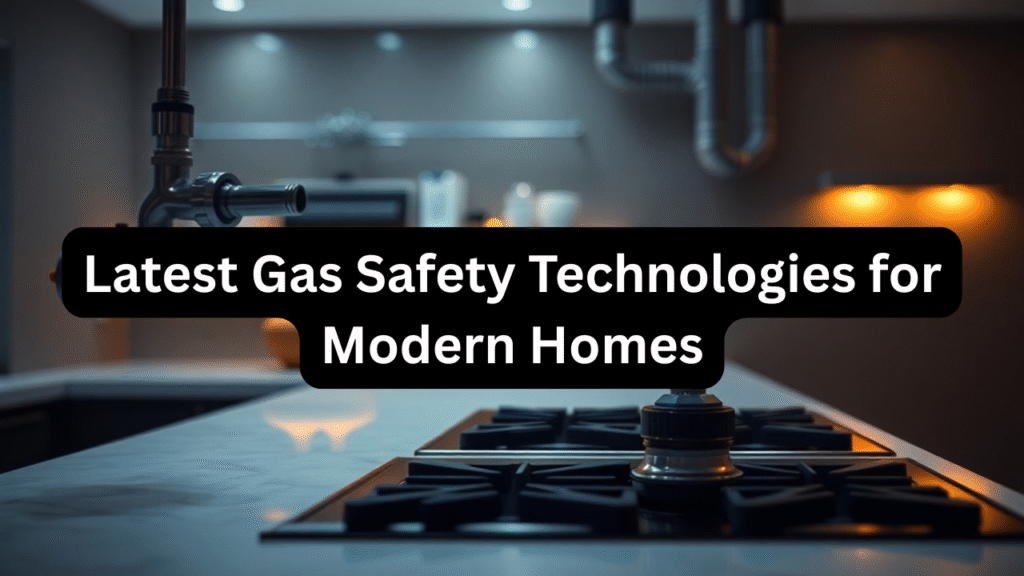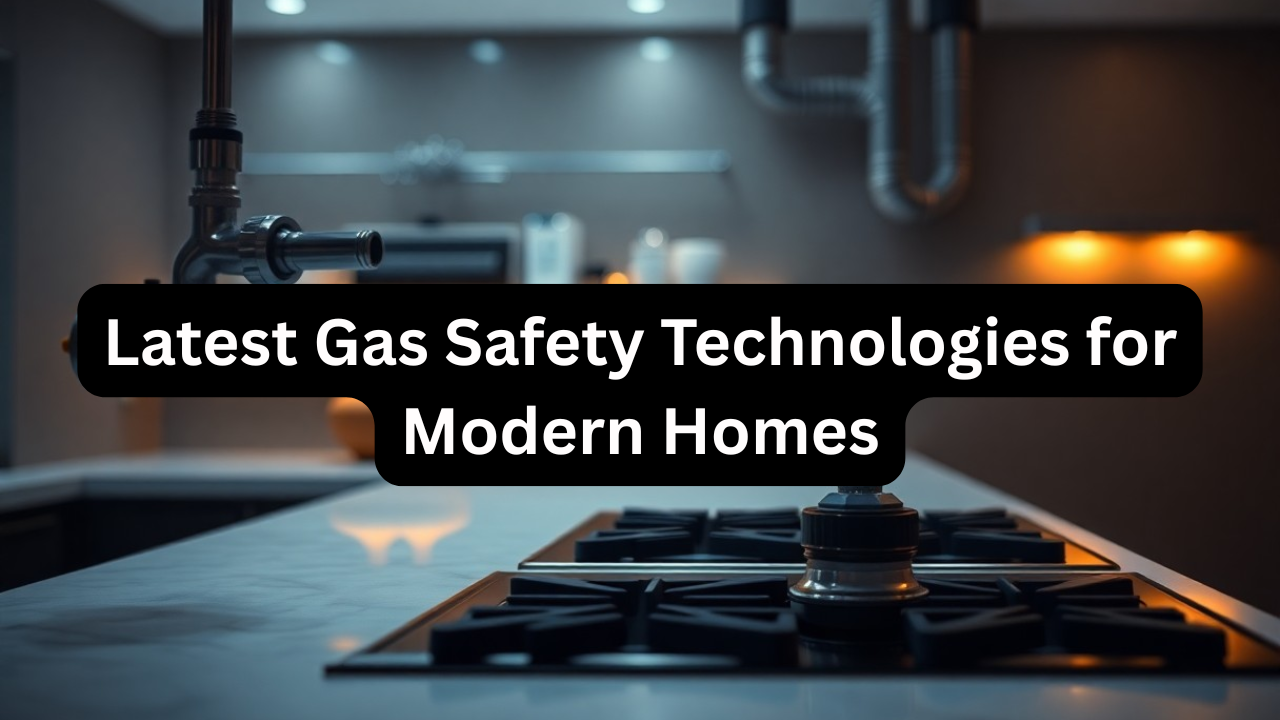
Gas appliances are a staple in many homes, offering convenience, efficiency, and cost-effectiveness. However, gas leaks, carbon monoxide exposure, and poor maintenance can lead to serious hazards. With advancements in technology, modern homes now have access to innovative gas safety systems that can detect, prevent, and alert homeowners to potential dangers—often before they become life-threatening.
Why Gas Safety Technology Matters
Traditional gas safety measures relied heavily on manual checks and periodic servicing. While these are still important, they cannot always catch problems early enough. Latest gas safety technologies offer real-time monitoring, instant alerts, and automated shut-off capabilities, giving homeowners an extra layer of protection.
Benefits include:
- Early Detection – Spotting leaks before they become dangerous.
- Automatic Prevention – Systems that shut off gas supply when an issue is detected.
- Remote Monitoring – Smart devices that alert you via smartphone apps.
- Improved Efficiency – Optimizing gas usage while maintaining safety.
Top Gas Safety Technologies for Modern Homes
1. Smart Gas Leak Detectors
These advanced detectors use sensors to identify even the smallest concentration of natural gas or LPG in the air.
- Features: Wi-Fi connectivity, smartphone alerts, high-accuracy sensors.
- Benefit: Immediate notification whether you’re at home or away.
2. Carbon Monoxide (CO) Alarms
Carbon monoxide is a silent killer—colorless, odorless, and highly toxic. Modern CO alarms often combine with smoke and gas leak detectors for all-in-one protection.
- Features: Digital displays, voice alerts, battery backup.
- Benefit: Alerts before CO levels reach dangerous thresholds.
3. Automatic Gas Shut-Off Valves
When leaks or earthquakes occur, these valves automatically cut off the gas supply.
- Features: Earthquake sensors, leak detection integration.
- Benefit: Prevents explosions or fires during emergencies.
4. Smart Home Integration Systems
These systems connect gas safety devices to home automation hubs like Alexa, Google Home, or Apple HomeKit.
- Features: Voice control, automated routines, combined safety notifications.
- Benefit: Centralized monitoring for all household safety systems.
5. Gas Pressure Monitors
Fluctuations in gas pressure can signal leaks or equipment issues. Modern monitors detect and report these changes instantly.
- Features: App-based tracking, adjustable alerts.
- Benefit: Reduces the risk of undetected leaks or system damage.
Comparison Table: Popular Gas Safety Devices
| Technology | Main Function | Best Feature | Ideal For | Average Cost |
|---|---|---|---|---|
| Smart Gas Leak Detector | Detects natural gas/LPG leaks | Mobile phone alerts | All homes with gas appliances | $30–$80 |
| CO Alarm | Detects carbon monoxide | Digital display + voice alert | Homes with gas heating/cooking | $25–$60 |
| Auto Shut-Off Valve | Stops gas flow during leaks/earthquakes | Seismic sensor integration | Earthquake-prone areas | $100–$300 |
| Smart Home Gas Integration | Links detectors to automation systems | Voice control + automation | Tech-savvy homes | $50–$150 |
| Gas Pressure Monitor | Monitors system pressure for abnormalities | Real-time app tracking | Large properties/businesses | $40–$100 |
Key Features to Look for in Modern Gas Safety Devices
- High Sensitivity Sensors – Capable of detecting minute leaks.
- Wireless Connectivity – Integration with smartphones for remote alerts.
- Battery Backup – Ensures devices work during power outages.
- Audible and Visual Alerts – Multi-sensory warnings for quick response.
- Regulatory Compliance – Devices should meet safety certifications like UL, CSA, or CE.
Maintenance of Gas Safety Technology
Even the most advanced devices require regular upkeep:
- Test Monthly – Ensure alarms and detectors are functioning.
- Replace Batteries – At least once a year, unless using sealed long-life units.
- Update Software – For smart devices, keep firmware updated.
- Schedule Professional Checks – A licensed gas fitter can verify device placement and performance.
Overview Table
| Technology Type | Detection Type | Preventive Action | Remote Monitoring | Safety Level | Example Use Case |
|---|---|---|---|---|---|
| Smart Leak Detector | Gas leak | Alarm + alert | Yes | High | Detecting kitchen stove gas leaks |
| CO Alarm | Carbon monoxide | Alarm | Some models | High | Gas heater exhaust monitoring |
| Auto Shut-Off Valve | Leak/earthquake | Gas supply cut | No | Very High | Preventing leaks after seismic activity |
| Home Integration Hub | Multiple hazards | Alerts + routines | Yes | Medium-High | Centralized control for all safety devices |
| Pressure Monitor | Gas line pressure drop | Alert | Yes | Medium | Detecting slow leaks in outdoor pipelines |
| Combo Safety System | Gas + CO + smoke | Multiple actions | Yes | Very High | Whole-house safety solution |
How to Choose the Right Gas Safety Setup for Your Home
- Assess Your Risks – Earthquake zones, older appliances, and large properties need extra measures.
- Set a Budget – Balance affordability with necessary safety features.
- Consider Smart Integration – If you already have a home automation system, choose compatible devices.
- Prioritize Certifications – Only buy devices approved by recognized safety standards.
The Future of Gas Safety
Emerging technologies promise even better protection:
- AI-Powered Leak Detection – Predictive analytics to spot potential failures.
- Blockchain Safety Logs – Secure records of maintenance and incident history.
- Integrated Drone Inspections – For hard-to-reach gas lines in large properties.
Conclusion
Gas safety is no longer just about manual checks—it’s about combining traditional awareness with the power of modern technology. From smart gas leak detectors to automatic shut-off valves, today’s innovations give homeowners the ability to detect, prevent, and respond to hazards faster than ever before. Investing in these technologies not only safeguards lives but also protects property and provides peace of mind.
3 One-Line FAQs
Q1: What is the most important gas safety device for a home?
A1: A smart gas leak detector is essential for early warning and prevention.
Q2: Do gas safety devices need professional installation?
A2: Some can be DIY-installed, but professional setup ensures optimal placement and safety.
Q3: How often should I replace a gas safety detector?
A3: Most devices should be replaced every 5–7 years, or as recommended by the manufacturer.

